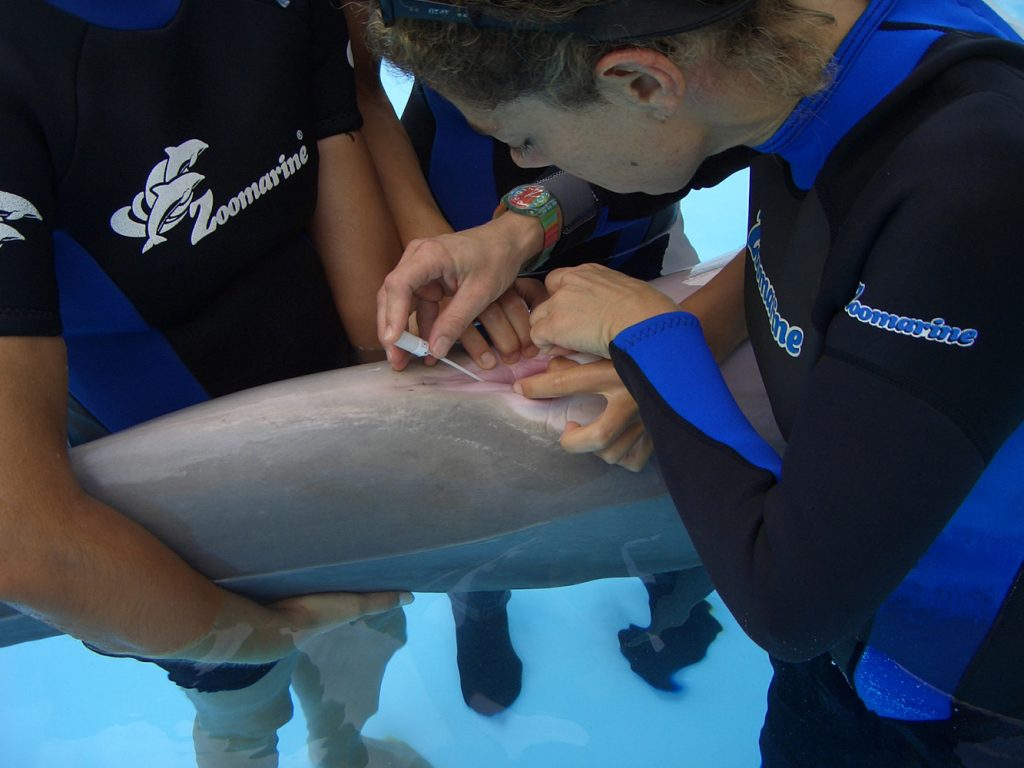Medical training
“Medical training”, a term commonly used to represent behavioural shaping leading towards the voluntary participation of an animal for a medical control or procedure, has now been integrated in the training program of most institutions presenting marine mammals and is more and more spreading to other species in zoological settings as well. This voluntary work with the animal was developed to diminish – or even completely eliminate – the constraints of capturing for a health control, to alleviate the stress during handling as well as the risks of being hurt for people and animals involved, and is definitively an important tool for the development of a good preventive medicine program.
Often, when an animal is not trained and it is difficult to get access to it for something as simple as a blood sample, an ultrasound or even a mouth check-up, the control is not performed and either the animal is medically assisted when it is too late or an empirical treatment may be started, sometimes for the wrong reason and leading to other problems.
It is at Marine Studios in Florida that dolphins were trained for the first time – about 80 years ago – and soon dolphin care-takers realized that if they could train their dolphins for amazing performances they could also use the principles of operant conditioning to desensitize and prepare them for their medical controls, with as result the first voluntary blood sample collected in the mid-sixties.
The collaboration between veterinarians and care-takers has evolved tremendously over the years, not having always been the swiftest ever, to a great relation nowadays. Indeed, the importance of the trainers’ and handlers’ work is paramount for the success of medical training. Without them and the relationship they have with the animals they take care of, there is no voluntary participation of the animals, no early detection of pathology, no correct follow-up of their health controls or no access for medical research for example.
Dr. Lacave not only teaches your staff the basics of operant conditioning but also teaches how to work the different training steps to obtain the different required behaviours and the practical applications when it comes to the medical advantage.
This is generally done through regular visits on site where the level of training (trainers and animals) is assessed, specific goals for the different animals and members of the staff are defined and the progresses followed-up on a frequent base. This can also be done with the help of modern tools such as skype life sessions, videos exchanges, etc. The consultation is always very practical during the visits, with Géraldine working together with the trainers and the animals during their sessions.
Géraldine has a good communication with trainers and handlers, a very practical hands-on approach with the animals and an interest in furthering research with these animals, all of which she considers important skills.
The good relationship between animals, trainers and veterinarians can often make the difference between success or failure.










